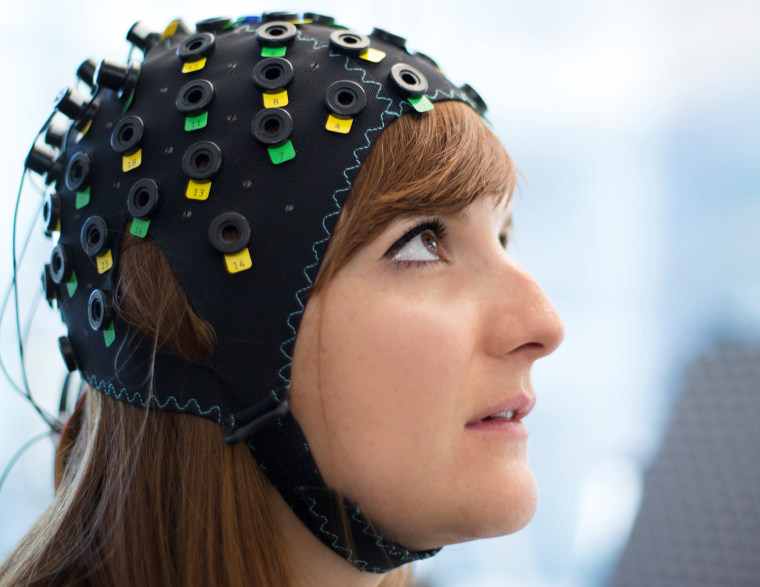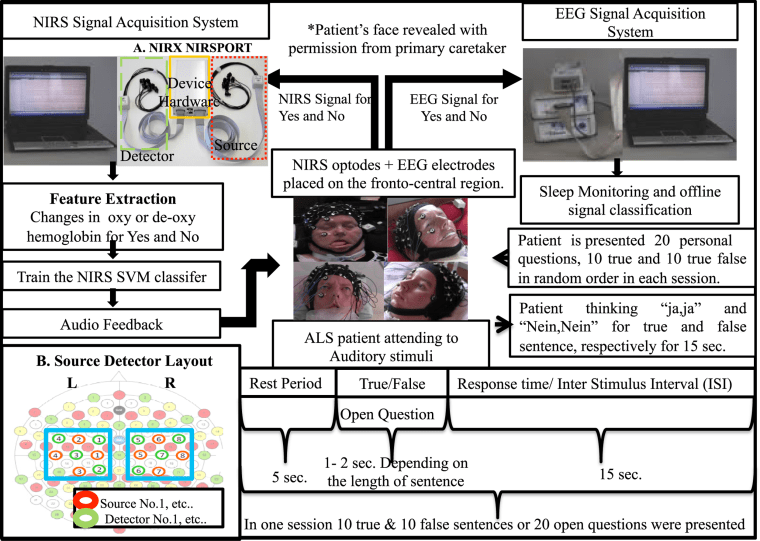The 68-year-old woman hadn't been able to talk for a decade. She'd been on a ventilator and a feeding tube since 2007 and hadn't been able to so much as blink an eye to communicate since 2010.
For all anyone knew, she was a human shell, made completely immobile by amyotrophic lateral sclerosis, also known as ALS or Lou Gehrig's disease.

Then her family heard about experiments being done at the University of Tübingen in Germany, where researchers were using brainwaves to communicate with paralyzed patients.
They begged Niels Birbaumer and colleagues for help.
Now Birbaumer's team reports they've been able to communicate with four ALS patients, including the woman known as "F," who had been completely locked in by their disease, unable to let anyone know whether their minds were sound and working.
Related: Paralyzed Patients Regain Feeling Using Virtual Reality
It's not much — just "yes" and "no," deciphered using electroencephalograms (EEGs) and near-infrared light to see where the blood flow was going in their brains. But the patients were able to communicate and, perhaps more important, to tell their families they were happy.
And it doesn't require brain surgery. It works using a cap and a spectroscope.
"Family members of all four patients experienced substantial relief and continue to use the system," the team reports in the Public Library of Science journal PLoS Biology.
"We were initially surprised at the positive responses when we questioned the four completely locked-in patients about their quality of life," Birbaumer said in a statement.
"All four had accepted artificial ventilation in order to sustain their life, when breathing became impossible; thus, in a sense, they had already chosen to live. What we observed was that as long as they received satisfactory care at home, they found their quality of life acceptable," he added.
"The striking results overturn my own theory that people with completely locked-in syndrome are not capable of communication."
"It is for this reason, if we could make this technique widely clinically available, it could have a huge impact on the day-to-day life of people with completely locked-in syndrome."
The team first set the equipment by asking the patients questions whose answers were known, such as "Is Berlin the capital of Germany?"
Related: Brain Chip Helps Paralyzed Man Feel Fingers
Then they could fine-tune the computer interface for each patient's pattern of oxygen use when he or she was thinking the word "yes" or "no."
"The striking results overturn my own theory that people with completely locked-in syndrome are not capable of communication," Birbaumer said.
"We found that all four patients we tested were able to answer the personal questions we asked them, using their thoughts alone. If we can replicate this study in more patients, I believe we could restore useful communication in completely locked-in states for people with motor neuron diseases."
"We found that all four patients we tested were able to answer the personal questions we asked them, using their thoughts alone."
Besides "Patient F," there was Patient "G," 76.
"She lost speech and capability to walk by 2011," the team wrote. "She started using assistive communication devices employing one finger for communication in February 2013."
She lost that ability in 2014 and was able to use an eye-tracking device for a few months to painstakingly spell out words, but she lost that function, also.
"The husband and caretakers declared no communication with her since August 2014," the team said.
Patient "B," the only man, 61, was diagnosed with ALS in 2011. By 2013, he could communicate only with his eyes, and he hadn't communicated since 2014, either.
The youngest patient, "W," was only 24 and had an unusually aggressive, early-onset form of ALS.
"She was able to communicate with eye tracking from early 2013 to August 2014 but was unable to use the eye-tracking device after the loss of eye control in August 2014," the team wrote.

"After August 2014, family members were able to communicate with her by training her to move her eyes to the right to answer 'yes' and to the left to answer 'no' questions until December 2014. In January 2015, eye control was completely lost, she tried to answer yes by twitching the right corner of her mouth, that too varied considerably, and parents lost reliable communication contact."
The Centers for Disease Control and Prevention reports that 12,187 people in the United States have ALS. It can't tell how many new diagnoses are made every year yet, but the registry shows that 4 in every 100,000 people has ALS.
ALS has no cure, and it progresses quickly or slowly. Patients always die, even if they can survive for years on ventilators and feeding tubes. But there's strong evidence the brain is the last organ to be affected.
This study confirms that patients can still hear and think, even if they can't let anyone know it.
Patient B was asked whether he would agree for his daughter to marry her boyfriend, "Mario." He answered "no" 9 times out of 10, the team reported.
